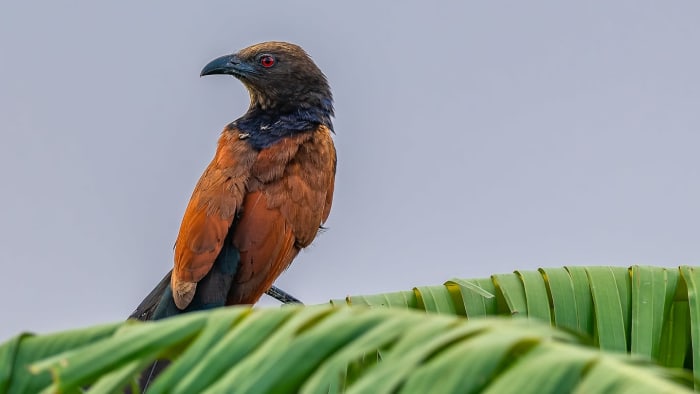 Listen to this article
•
15:34 min
Listen to this article
•
15:34 min
Back in the early 1980s, when we were new to Delhi, we were looking for a place to walk our dog. To our delight, we discovered the Northern Ridge, just a five-minute drive from our house. On our very first walk there, we reached a little late in the evening, and as twilight descended swiftly, we lost our way. We followed the narrow, meandering, stony paths and came across one of the area’s notorious ponds — the Serpentine — that glinted moss green, black, and malevolent, and were shrouded by thorny kikar trees and bamboo. These ponds were reputed to be haunted, and apparently, unspeakable deeds had been done here during and after the revolt of 1857. Sure enough, as we walked by, a hollow, sepulchral “coup-coup-coup” call boomed out from the bamboo thickets overhanging the pond. It was too dark to make anything out, so we quickened our steps. But Bambi, our boxer, seemed completely unperturbed and continued sniffing around excitedly. Surely, if this had been a malevolent spirit or something of the kind, she would have bristled and growled.
Later, I realised that we had encountered a bird — the crow pheasant, aka the greater coucal (Centropus sinensis) and a bit of an enigma. It’s a whopping 48 cm in length, the size of a healthy jungle crow, and has a long tail (apparently like a pheasant), but is related to neither crow nor pheasant. Instead, it belongs to the notorious cuckoo family. Dressed in jet black, glossed with purple, with dark russet wings and blood-red eyes, it makes me think of what Dracula’s valets might look like. But it redeems itself somewhat, as unlike others of its clan, it is not a brood parasite. It lovingly brings up its own young, with both parents caring for the babies.

Cover Photo: The greater coucal has copper wings, a bluish-black neck and deep red eyes. Its call is a series of deep, resonant ”oop-oop-oop” notes.
The crow pheasant is a secretive bird, prone to skulking around the bottom of bushes and hedges, looking out for bird’s eggs, nestlings, insects, lizards, and even the deadly saw-scaled viper and poisonous yellow oleander. It is a weak flier, preferring to clamber about on branches, power walk around as it forages or sunbathes from atop bushes during the mornings and afternoons with its wings spread out.
In Goa, a pair checks out our garden and swimming pool area regularly, emitting their haunting “coup-coup-coup” calls, which can make you feel just a little uneasy no matter how many times you hear it. One can only imagine the plight of smaller birds like warblers, whose babies they hunt. The calls may increase in frequency and tempo and be repeated up to 20 times. The sudden, deathly silence that follows can be equally disconcerting! The greater coucal can be found all over the Indian subcontinent, in habitats ranging from jungle to cultivation and urban gardens.

Greater coucals breed during the monsoon and are monogamous. Couples will chase each other across the ground, with the gentleman offering gifts of food to his lady love. If she likes him, she will lower her tail and droop her wings as an invitation to the subsequent honeymoon. The male is mostly in charge of nest construction, creating a deep, messy cup of twigs and leaves covered by a dome — stuffed into dense foliage or bamboo clumps, around six metres above the ground. Between 3 and 5 eggs are laid, and both parents look after the brood. Jungle crows maraud their nests in search of nestlings — in a strange kind of tit-for-tat!
To add to the enigma, the bird is associated with omens and superstitions around the country. It is sometimes linked with evil spirits (on account of its ghoulish calls) and, in other areas, called the Bharadwaj bird and considered a good omen. Bharadwaja is a great sage and father of Drona from Mahabharata, who was said to have worshipped Lord Vishnu when he took the form of this bird!

As there is a “greater” coucal, there must also be a “lesser” coucal (Centropus bengalensis), also found in India, and between 33 and 37 cm in length. They are found in the submontane tracts of the Himalayas, east from Dehradun and patchily across the Indian peninsula. Their plumage has pale whitish streaks and shafts, and the tail is white-tipped. They prefer sticking to marshy areas, reed beds, tall grasslands, and scrub jungles cheek-by-jowl with forests. As described by Salim Ali, their calls are a double-noted “whoot-whoot-whoot” followed by a pause and then “kurook-kurook-kurook”. The ladies are larger than the gents. Lesser coucals mostly eat insects and have a special fondness for grasshoppers. Breeding takes place during the monsoon, and 3-4 chicks may be raised by both parents. In other aspects of behaviour, they are similar to their larger, hulking cousins.
I once watched a greater coucal searching for nests and nestlings, and there was something truly ruthless and chilling about the way it went about its hunt. This was at the Northern Ridge, adjoining another of the Ridge’s blackwater ponds, the eerily named “Khooni-Khan” jheel on this occasion. The big bird hopped systematically along the thickly foliaged shoreline, emitting its echoing “coup-coup-coup” call, occasionally stuffing its face into the foliage to check for nests, and reminding me of black-uniformed secret police hunting the weak and the vulnerable. Sure enough, it caused a panic-stricken flutter among smaller birds, like munias and tailorbirds, that may have had homes in the area — though this time, its hunt seemed unsuccessful. Indeed, this is one bird that can give you the heebie-jeebies no matter how many times you may have encountered it before — whether you are a tiny warbler or a human wrestler!






